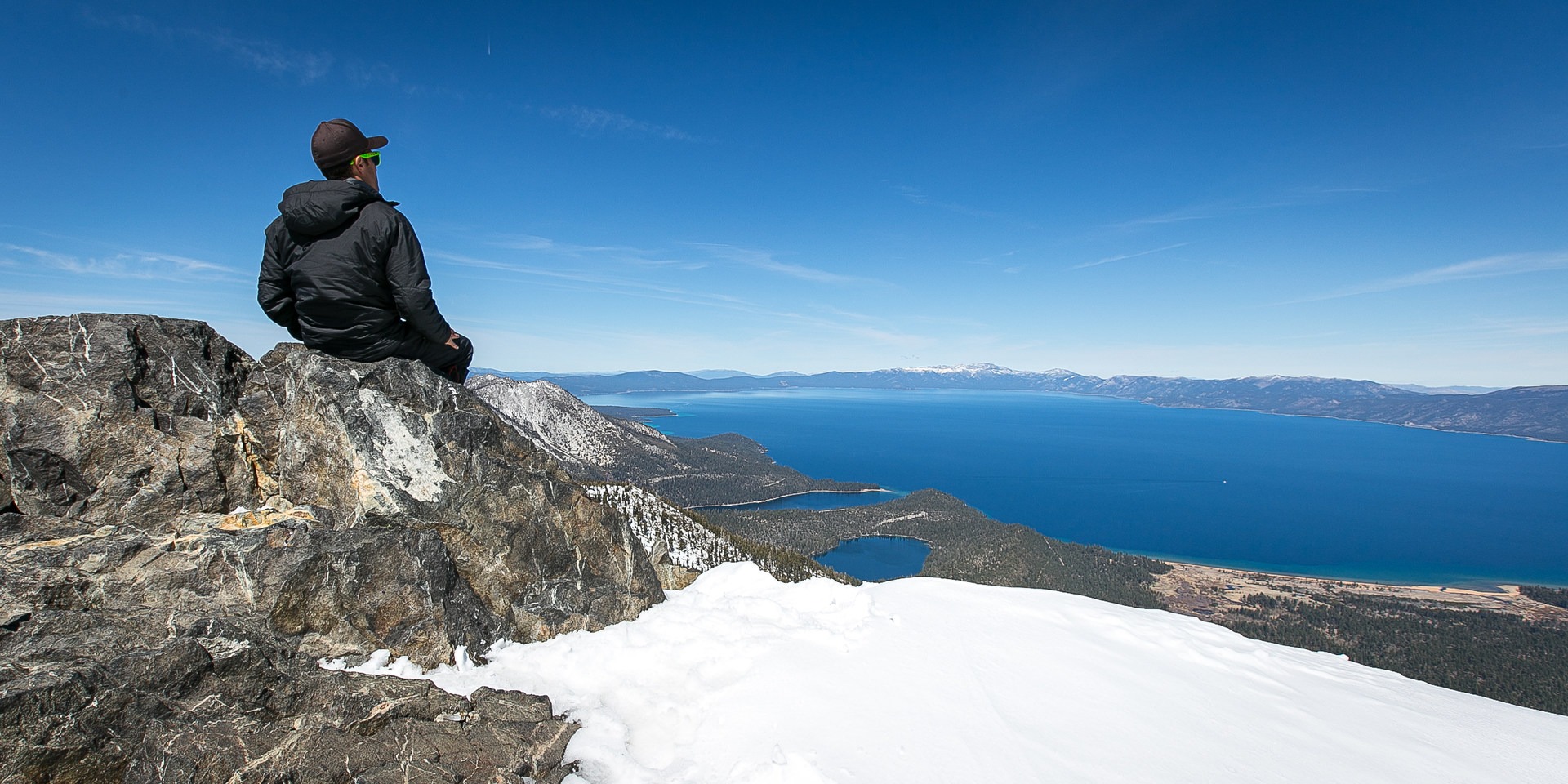You are here
Mount Tallac is one of the crowns of Tahoe-area hiking. In snowy conditions, it is possible to climb to the summit and back down without seeing another soul along the trail. The Glen Alpine Trail is the longer of the main trails to the summit of Mount Tallac (about a mile longer than the Summer Trail), but it has the most gradual grade of the main winter approaches. That being said, Mount Tallac is a serious undertaking, even in the dry season when trails are not hidden beneath snow and hikers are unencumbered by the additional drag of snowshoes. Note that this winter trail is often buried beneath snow. Due to the length of the snowshoe, navigational assistance is strongly recommended for this adventure.
The trail begins beside Lily Lake, one of a series of lakes in the glacially-carved valley in the Fallen Leaf Lake area of Lake Tahoe's southern end. Everyone entering Desolation Wilderness must fill out one of the free permits available at the trailhead (overnight permits require a fee and must be filled out in advance). Depending on the amount of snow, you may find that reaching the trailhead parking area requires a short hike in; alternately, in dry conditions you may have to carry your snowshoes over a portion of the trail until the snow becomes sufficiently heavy.
This route begins climbing almost immediately from the trailhead, with gradual switchbacks appearing at first out of the Lily Lake Basin. In all, the trail ascends 3,214 feet over the 5.3 miles to the summit. Snow can last late into the season, making this a good trail for snowshoeing after most other areas in the Tahoe basin have gone dry.
You'll pass several private cabins and Glen Alpine Lodge, a restored area with interpretive signs explaining the establishment of a health springs resort. As you climb out of the valley, some of the dense pine forest gives way to manzanita bramble. The trail requires not only numerous stream crossings, it often lies within the course of the stream itself.
Trail forks tend to be well-marked with wooden posts, and blazes have been cut into trees to sporadically mark the trail. Though they don't appear consistently enough to be relied upon for navigation, they may be helpful should you lose the trail.
After about 3.5 miles the route begins to parallel a stream on the approach to Gilmore Lake that sits at the bottom of a mountain bowl. This makes a good place to rest, have a snack, and prepare yourself for the final stretch to the summit of Mount Tallac, a climb of more than 1,400 feet up from Gilmore's frozen shores. Simply head in a north by northeast direction toward the high point. A more modest (relatively speaking) slope approaches the saddle just east of the mountain wall at the far side of Gilmore Lake, or you can cut some distance and head straight up the slope toward the summit. Near the top you'll have to shed your snowshoes and climb the final portion of shaled granite, being careful of loose stones.
From the top the views stretch from the cascading peaks of the Desolation Wilderness to the west with Cascade Lake and Emerald Bay below, across the lake to the casinos at Crystal Bay visible below Mount Rose, and to the deceptively small casinos at Stateline on the Nevada border. Beneath you is the ski bowl that some brave climbers opt to use for their descent.
Bundle up against the wind, enjoy the vista from one of the Tahoe area's most iconic peaks, then turn back and begin the much easier hike back toward the trailhead.
Logistics + Planning
Current Weather: Powered by Dark Sky
























Comments
Sign In and share them.